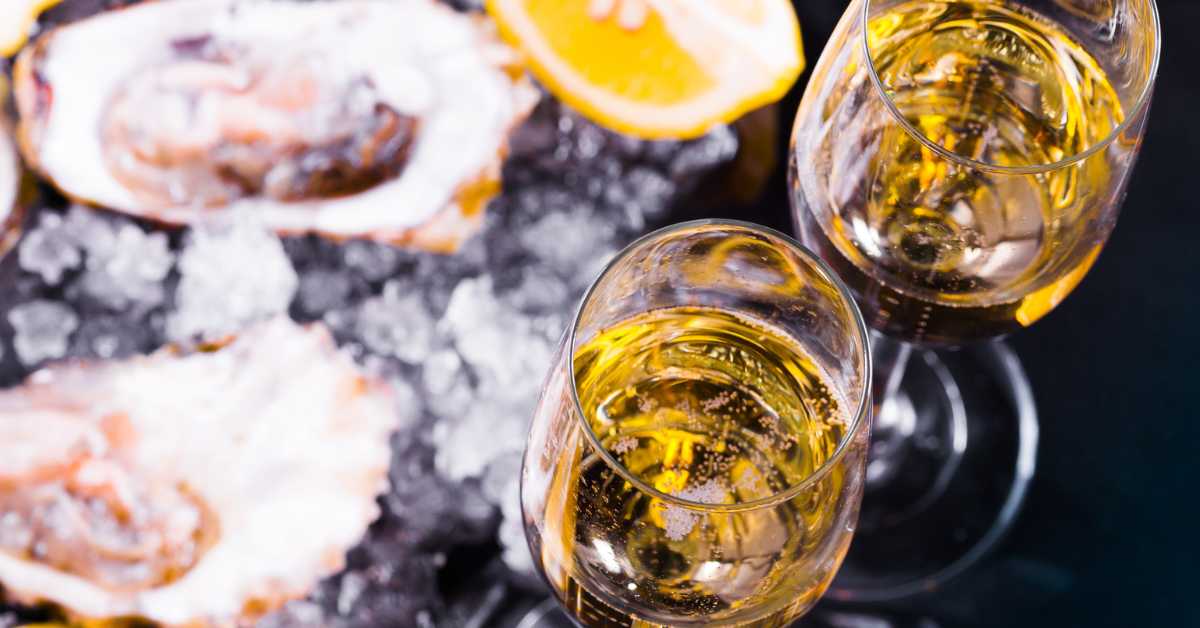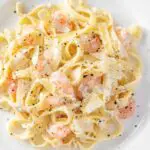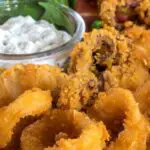Have you ever wondered why oysters and champagne are so often paired together in fancy restaurants? Is it just because they’re both expensive or is there something more to this classic pairing? The truth is, there’s a scientific reason behind this culinary match made in heaven, known as umami synergy, and it’s all about how our human taste buds experience flavor. Let’s dive into this interesting topic!
The Science of Taste
Understanding Umami
Now, before we dive into the specifics of oysters and champagne, let’s get a brief understanding of what umami is. Umami, which comes from the Japanese word for ‘delicious,’ is one of the five basic flavors detectable by our taste buds. It gives food a rich, savory, and deeply satisfying taste. Think of the flavor in cooked mushrooms, ripe tomatoes, or broth in a warm bowl of chicken noodle soup. That’s umami!
Umami Synergy
Umami synergy is a term used when two foods, each containing umami flavor, are paired together, creating a notably synergistic effect that enhances the overall umami taste. It’s like when you combine two awesome superhero powers – they can do a lot on their own, but together, they’re almost unstoppable!
The Chemistry of Champagne
The Role of Yeast
Champagne, the sparkling wine synonymous with celebration, owes its unique taste to yeast. During fermentation, yeast cells consume sugar and produce alcohol, carbon dioxide (which gives the bubbles), and other compounds that contribute to the wine’s flavor. But the yeast’s job doesn’t end there.
Dead Yeast Cells and Umami
After the yeast cells have done their work, some remain in the bottle for several months, or even years in the case of older vintage champagnes. Over time, these dead yeast cells break down in a process called autolysis, releasing amino acids, among other things. These amino acids contribute to the umami taste of champagne.
Story of Oysters
Variety Matters
All oysters are not created equal when it comes to their umami potential. A study led by student Charlotte Vinther Schmidt from the University of Copenhagen found a significant difference between two types of oysters – the native Danish Limfjord and the invasive Pacific oysters.
Limfjord Oysters and Umami
According to the study, the Limfjord oysters had a much higher level of umami flavor compared to their Pacific counterparts. This is mainly due to the higher amount of free amino acids present in the native Limfjord species, giving them a unique umami flavor.
Power of Pairing
Unlocking the Umami
- The pairing of oysters and champagne enhances the umami taste in both, creating an uncanny umami synergy.
- The amino acids in the champagne, released from the dead yeast cells, combine with the umami-rich Limfjord oysters to amplify the savory taste.
- This is why the champagne and oyster pairing is a classic one – it’s not just about luxury, it’s about a scientific, taste-enhancing effect!
Unwrapping the Science
The Umami Effect
Charlotte Vinther Schmidt and her mentor, Professor Ole Mouritsen, found that the umami compounds in both champagne and oysters work together in a unique way. When paired, they create a flavor profile that neither can achieve alone, much like how some colors look more vibrant when placed next to each other.
The Role of Amino Acids
Champagne
The process of autolysis in champagne creates glutamate, an amino acid responsible for the umami taste. This happens when the dead yeast cells break down over time, especially in older vintage champagnes.
Oysters
Oysters, particularly the Danish Limfjord species, are rich in another type of amino acid called aspartate. This compound, just like glutamate, contributes to the umami flavor.
Working Together
The umami synergy happens when the glutamate from champagne and aspartate from oysters come together. This combination creates a stronger, more satisfying umami experience, making the champagne and oyster pairing a favorite.
Umami and Beyond
Balancing the Flavors
While umami is at the heart of why oysters and champagne pair so well, there are other factors at play. The briny, salty taste of oysters is balanced by the crisp acidity and slight sweetness of champagne. This balance of flavors adds to the appeal of this pairing.
Texture Matters
In addition to the flavors, the textures of champagne and oysters complement each other. The creamy, velvety texture of oysters is contrasted by the lively, effervescent bubbles of champagne, creating a delightful sensory experience.
Joy of Experimentation
Variety is the Spice of Life
While the combination of oysters and champagne is a classic, don’t let that stop you from experimenting. Different types of oysters and sparkling wines can offer different levels of umami and other flavors. Just remember, the key is to find a balance that pleases your palate.
Personal Preferences
Everyone’s taste buds are unique. What works for most may not work for you, and that’s perfectly okay. The world of food and wine pairing is vast and exciting. So, go ahead, explore, and discover your own perfect pairings!
Evolution of Taste
People and Umami
Why do people associate umami with deliciousness? Some food scientists believe that our love for umami taste may have evolutionary roots. Early humans who could identify umami-rich foods, which are often high in protein, had a nutritional advantage.
Umami in Our Daily Lives
While umami is often associated with gourmet foods like oysters and champagne, it’s also present in everyday foods like tomatoes, cheese, and meat. Recognizing the umami taste can enhance your appreciation for these common foods.
Debunking Myths
Umami is Not MSG
Misconceptions
There’s a common misconception that umami and monosodium glutamate (MSG), a flavor enhancer, are the same. This is not accurate. While MSG does provide an umami taste, it’s just one source of it, and not all umami-rich foods contain MSG.
Understanding MSG
MSG is a salt of the amino acid glutamate, which naturally occurs in many foods that we associate with umami taste. When used in moderation, MSG is considered safe by many health organizations worldwide.
More Than MSG
Umami is a complex and naturally occurring flavor that can be found in a variety of foods, from oysters and champagne to aged cheeses and ripe tomatoes. It’s a taste that goes beyond the artificial and into the realm of nature’s own flavor enhancers.
Knowledge of Umami
Around the World
From the savory soy sauce in Japan to the tangy tomato sauce in Italy, umami can be found in different cuisines around the world. Each culture has its own ways of bringing out this delectable taste in its traditional dishes.
Beyond Seafood
While seafood, especially oysters, is a great source of umami, this flavor can also be found in other foods. Meats, vegetables, and fermented foods are all rich in umami. In fact, green vegetables might lack umami on their own, but when cooked with umami-rich ingredients, they can be quite delicious!
Future of Food Pairing
How Science Plays a Role
With the help of food science, we can understand why certain food pairings, like oysters and champagne, work so well. This knowledge can guide us in creating new and exciting flavor combinations, pushing the boundaries of culinary art.
Unexplored Pairings
Just imagine the unexplored potential for umami synergy with other food and wine pairings. The future of gastronomy promises to be an exciting journey of discovery, with science leading the way!
Key Takeaways
Unlocking the Flavor Code
- Understanding the science of umami and umami synergy can enhance your culinary experiences.
- The classic pairing of oysters and champagne is a perfect example of umami synergy in action.
- Experimentation based on scientific principles can lead to delightful new food and wine pairings.
A Toast to Science
Cheers to Food Science
Next time you enjoy a glass of champagne with a plate of oysters, remember it’s not just a luxurious indulgence. It’s also a celebration of science, a testament to the intricate dance of amino acids that tickle your taste buds and make your meal truly memorable.
The Journey Continues
Our understanding of taste and food pairing is still evolving. With each new study and scientific report, we’re getting closer to fully understanding how our taste buds interpret the complex symphony of flavors in our food. And that’s something to look forward to!
Conclusion
Why Oysters and Champagne Go Together So Well: The Final Word
In the end, the reason why oysters and champagne go together so well boils down to science. The umami synergy created by the amino acids in these foods delivers a taste experience that’s hard to beat. It’s a beautiful blend of nature’s bounty and human culinary wisdom, a pairing that delights our senses and keeps us coming back for more. So, here’s to oysters and champagne, to umami, and to the endless adventure of discovering new flavors. Cheers!

Claudia Faucher is a fitness trainer and lifestyle blogger, who recently started to pursue her other passions… Southern cooking and creating recipes.







